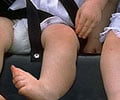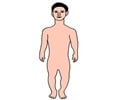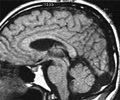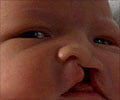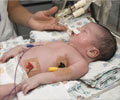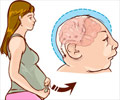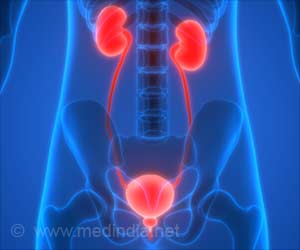Genes involved in major birth defects may also contribute to psychiatric disorders such as schizophrenia, autism and bipolar disorder, says research.

In a new study designed to explore whether Dact1 mutations exert more nuanced effects in the brain that may lead to mental illness, Cheyette, John Rubenstein, MD, PhD, and colleagues in UCSF's Nina Ireland Laboratory of Developmental Neurobiology used a genetic technique in mice to selectively delete the Dact1 protein only in interneurons, a group of brain cells that regulates activity in the cerebral cortex, including cognitive and sensory processes. Poor function of interneurons has been implicated in a range of psychiatric conditions.
As reported in the June 24, 2013 online issue of PLOS ONE, when the research team examined these genetically altered interneurons in adult mice, they found that the cells appeared relatively normal and had managed to find their proper position in the brain's circuitry during development. But the cells had significantly fewer synapses, the sites where communication with neighboring neurons takes place. In additional observations not included in the new paper, the team also noted that the cells' dendrites, fine extensions that normally form bushy arbors studded with synapses, were poorly developed and sparsely branched.
"When you delete this gene function after initial, early development -- just eliminating it in neurons after they've formed -- they migrate to the right place and their numbers are correct, but their morphology is a little off," Cheyette said. "And that's very much in line with the kinds of pathology that people have been able to identify in psychiatric illness. Neurological illnesses tend to be focal, with lesions that you can identify or pathology you can see on an imaging study. Psychiatric illnesses? Not so much. The differences are really subtle and hard to see."
The Dact1 protein is part of a fundamental biological system known as the Wnt (pronounced "wint") signaling pathway. Interactions among proteins in the Wnt pathway orchestrate many processes essential to life in animals as diverse as fruit flies, mice, and humans, including the proper development of the immensely complex human nervous system from a single fertilized egg cell.
One way the Wnt pathway manages this task is by maintaining the "polarity" of cells during development, said Cheyette, "a process of sequestering, increasing the concentration of one set of proteins on one side of the cell and a different set of proteins on the other side of the cell." Polarity is particularly important as precursor cells transform into nerve cells, Cheyette said, because neurons are "the most polarized cells in the body," with specialized input and output zones that must wind up in the proper spots if the cells are to function normally.
Advertisement
Meanwhile, as yet unpublished findings from human genetics research conducted by Cheyette's group suggest that individuals with autism are significantly more likely than healthy comparison subjects to carry mutations in a Wnt pathway gene called WNT1.
Advertisement
Rubenstein is the Nina Ireland Distinguished Professor in Child Psychiatry.
Source-Eurekalert





